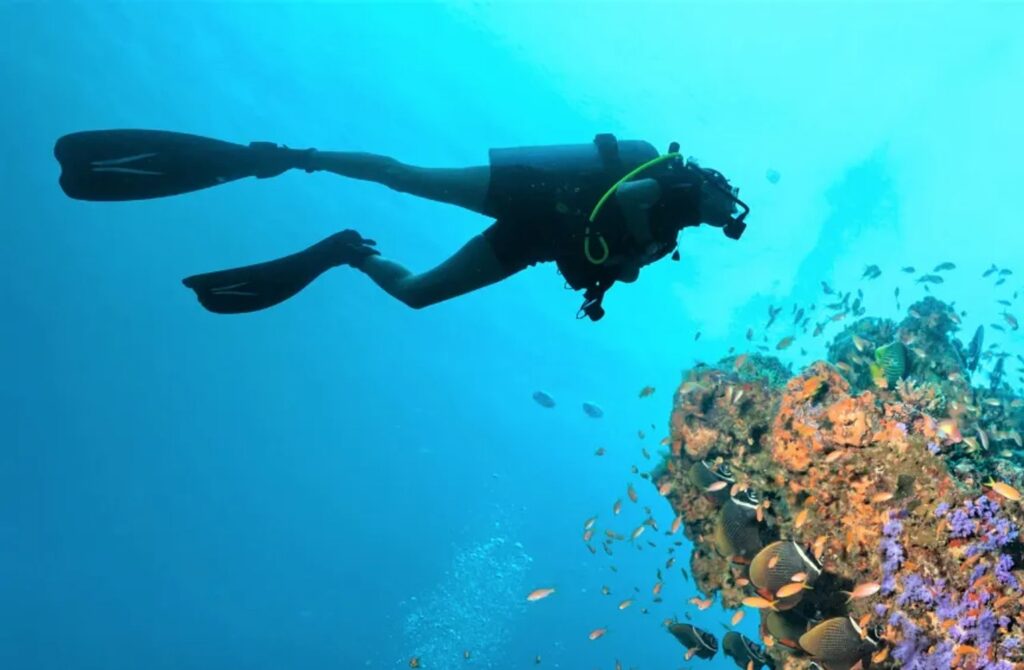The Ultimate Guide: Everything You Need to Know About Diving in Untouched Huvadhoo Atoll

If you’re seeking the ultimate diving escape, look no further than Huvadhoo Atoll—a remote gem in the Maldives that’s still largely untouched by mass tourism. Known for its pristine waters, vibrant marine life, and thrilling dive spots, diving in Huvadhoo Atoll offers an unforgettable experience for both beginners and seasoned divers.
Whether you’re planning your next scuba adventure or simply daydreaming about coral gardens and pelagic encounters, this guide covers everything you need to know about diving in this secluded paradise. 🐠
📍 Where Is Huvadhoo Atoll?
Huvadhoo Atoll, also known as Gaafu Atoll, is located in the southern Maldives. It’s one of the largest atolls in the world, comprising over 230 islands, many of which are uninhabited. The atoll is divided into two administrative sections:
- Gaafu Alifu (North Huvadhoo)
- Gaafu Dhaalu (South Huvadhoo)
Its isolation means fewer crowds and more untouched dive sites. 🌴

🤿 Why Dive in Huvadhoo Atoll?
1. Unspoiled Dive Sites
Unlike the more popular diving areas in the Maldives, Huvadhoo remains largely unexplored. That means clearer waters, richer biodiversity, and undisturbed coral reefs.
2. Big Fish Action
Expect encounters with:
- Grey reef sharks
- Whale sharks (in season)
- Manta rays
- Tuna, barracuda, and napoleons
It’s a dream destination for big pelagic lovers.
3. Drift Dives Galore
Huvadhoo’s outer reef channels (locally called kandus) are perfect for exhilarating drift dives. The strong currents attract large marine life, making each dive an adrenaline-pumping experience.
🐟 Top Dive Sites in Huvadhoo Atoll
Here are some must-dive locations:
🔹 Nilandhoo Kandu
A powerful drift dive with regular sightings of reef sharks and eagle rays.
🔹 Villingili Kandu
Expect encounters with manta rays, especially during the northeast monsoon.
🔹 Maarehaa Kandu
A hidden treasure with incredible coral formations and strong chances of hammerhead sightings in deeper waters.
🔹 Gemanafushi Outside
Famous for large schools of fish and seasonal whale shark appearances.
📅 Best Time to Dive in Huvadhoo Atoll
- December to April (Northeast Monsoon): Excellent visibility, great for spotting pelagics.
- May to November (Southwest Monsoon): Higher chances of manta rays and whale sharks.
💡 Pro tip: Plan a liveaboard trip during the monsoon transition for the best of both worlds.
🏝️ Liveaboard vs. Resort Diving
✅ Liveaboard Diving
- Covers multiple dive sites in a single trip
- Great for experienced divers seeking adventure
- Offers night dives and remote locations
✅ Resort-Based Diving
- Ideal for those who want comfort and downtime
- Great for beginner divers and snorkelers
- Family-friendly with PADI courses often available
🧳 What to Pack for Your Dive Trip
- Reef-safe sunscreen 🧴
- Dive certification card (e.g. PADI, SSI)
- Dive computer & logbook
- Lightweight wetsuit (3mm recommended)
- Underwater camera (the marine life here is too good not to capture!) 📸
🛫 How to Get to Huvadhoo Atoll
- Fly into Velana International Airport (MLE) in Malé.
- Take a domestic flight to Kooddoo or Kaadedhdhoo (approximately 1–1.5 hours).
- Transfer via speedboat or seaplane to your resort or liveaboard.
🌿 Responsible Diving in Huvadhoo
Preserve this underwater paradise by:
- Not touching coral or marine life
- Practicing good buoyancy control
- Using reef-safe products
- Supporting eco-conscious dive operators
Final Thoughts: Is Huvadhoo Atoll Worth It?
Absolutely. If you’re after uncrowded dive sites, megafauna sightings, and vibrant coral gardens, diving in Huvadhoo Atoll is a must. Its remoteness is a gift—allowing you to experience the raw beauty of the Maldives as it was meant to be.
🌟 Whether you’re going on a liveaboard expedition or a luxury dive retreat, Huvadhoo Atoll promises the dive trip of a lifetime.
